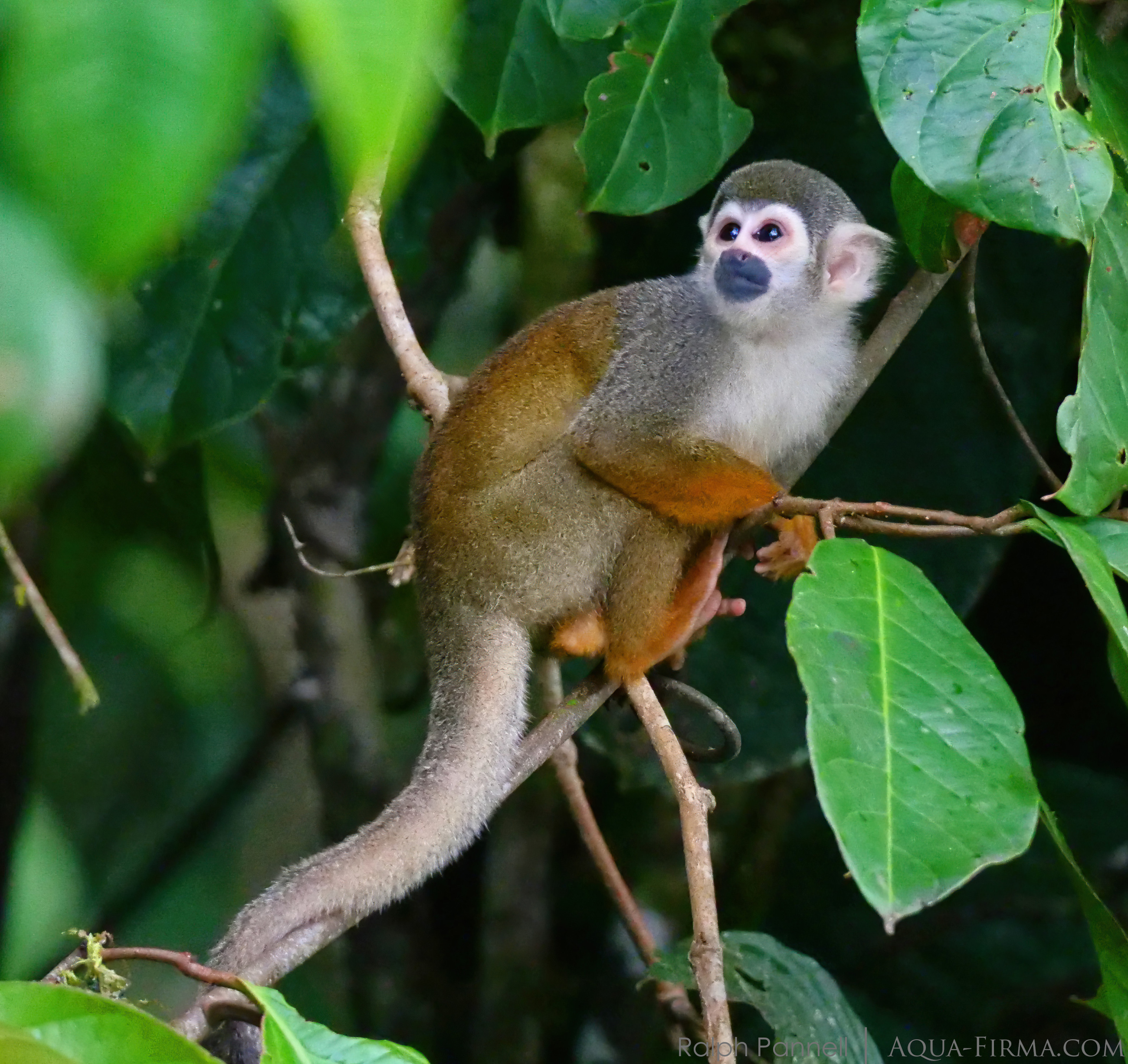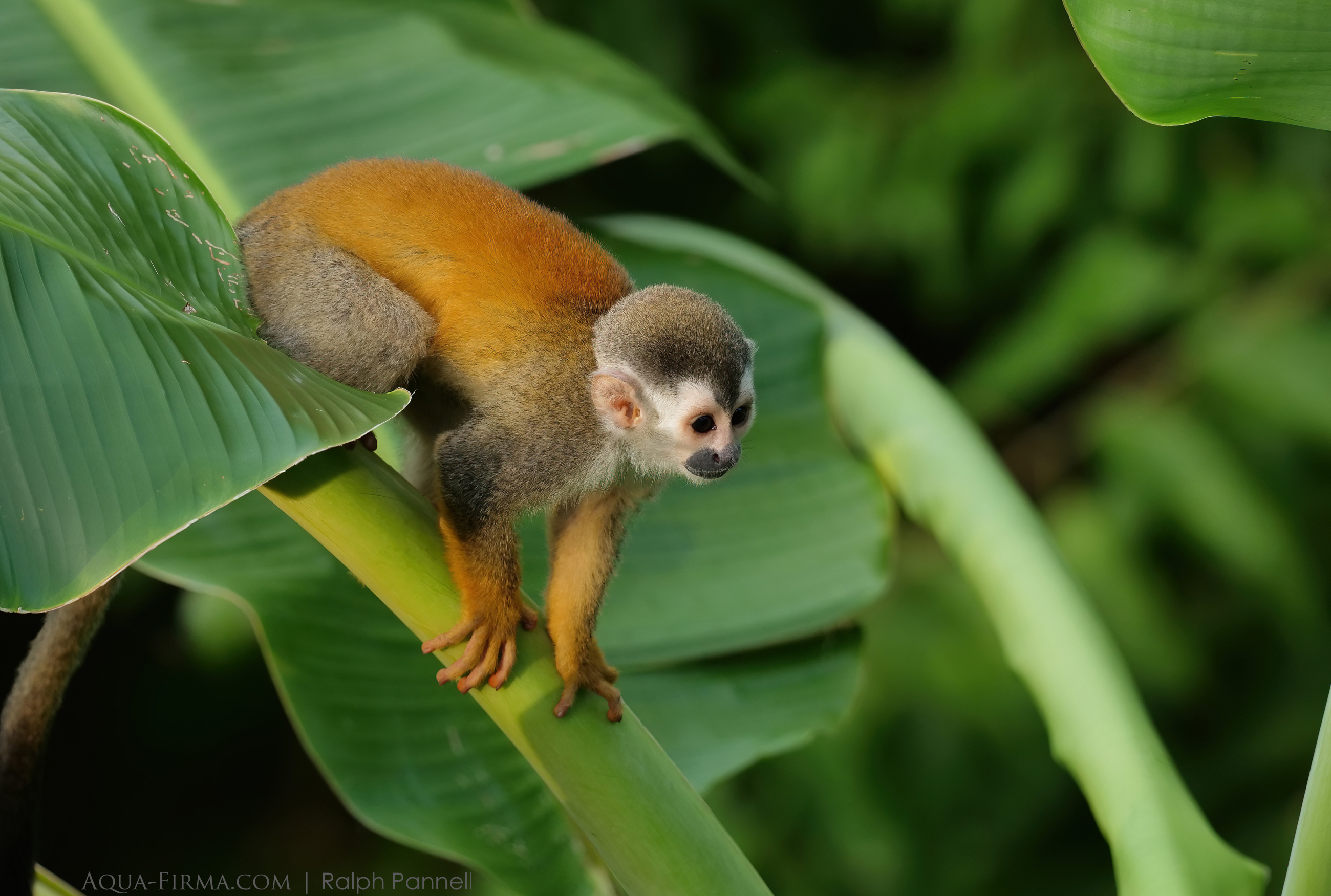Pantanal Wildlife Cruises, Crystal River & Atlantic Coast
Brazil
US$6,690
(14 days Nov - July season)
11 - 24 Jun, 2026 hosted by Aqua-Firma photographer, Ralph Pannell, formerly of Rainforest Concern
Squirrel Monkeys are very attractive and entertaining to watch; but even if you could, you wouldn't want to hold one. Here's why:
Squirrel Monkeys can only sweat through the palms of their feet and hands. If they need to cool themselves further, then they wipe urine over their fur. Scent marking is automatically easily performed.
Part of the entertainment of seeing Squirrel Monkeys is that groups can be large and mixed. From a large perspective, they can move around in troops of up to 500! Whilst that might be a rarity, troops of 50 or more is not uncommon in areas of forest free from hunting.

With large mixed troops, lots of social interaction makes for entertaining observation. They give themselves away with lots of chatter, squabbling and youngsters playing; all at a much faster metabolic rate than humans operate at.
Until the 1984, it was thought that there was one species of Squirrel Monkey, found from the southern Amazon as far north as Costa Rica. It has since been determined that there are 5 separate species. Many of the photos on this web page are of Ecuadorian Squirrel Monkeys (Saimiri sciureus macrodon, which is a subspecies of the Guianan squirrel monkey Saimiri sciureus), shot on a Tropical Andes to Amazon journey in southern Ecuador; and other images from forests close to the Rio Napo. Other images are of the Black-crowned subspecies of the Central American squirrel monkey (Saimiri oerstedii oerstedii) seen in various parts of Costa Rica where we operate tailor-made journeys.
In addition to primary forest, Squirrel Monkeys can often be seen in secondary forest. Here they can find plenty of fruit and insects to eat amongst colonising plant species. Occasionally, Squirrel Monkeys will also eat seeds, nuts, leaves, flowers, buds and eggs.

Conservation
Adult Squirrel Monkeys weigh between 1/2 and 1.1kg, so they are not a prime target for bushmeat. Their cuteness and significantly lower aggression than Capuchins does, however, make them a target for the pet trade. They are also taken from the wild for animal testing.
Habitat loss through deforestation is significant. To see what Aqua-Firma is doing to help this please visit:
https://aqua-firma.com/rainforest4climate
Classification
Squirrel Monkeys are part of the Cebidae family of New World Primates, within which Capuchins are also members, but split around 16 million years ago.